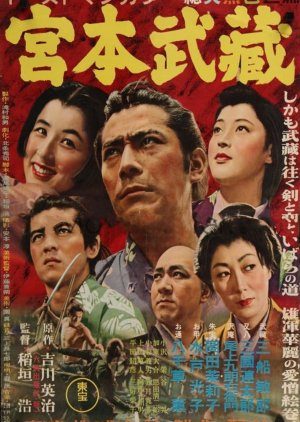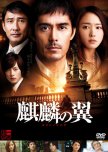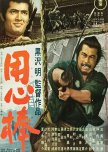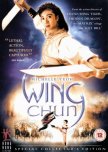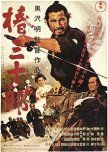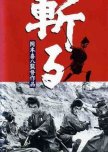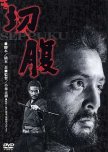
This review may contain spoilers
Samurai 1: Musashi Miyamoto is the first in a Samurai trilogy starring the charismatic Mifune Toshiro as the titular legendary swordsman. This film sets up the story from the time he was a brash "lawless" teenager looking to become a samurai to the point when his wild will is tamed.Mifune was already thirty-four when this film was released and looked every bit a man, but he did try to give Takezo a younger man's emotional vulnerability. Takezo as he was called in his youth and his buddy Matahachi run off and join the wrong side of the Sekigahara Battle. Carrying a wounded Matahachi, the two end up at a hut with a mother and daughter. The women take them in and care for them until bandits show up. Takezo fights them off while Matahachi and the daughter Akemi take the more expensive items the women have stripped off of fallen samurai to hide. When the mom, Oko, puts the moves on Takezo (just like her daughter had done before her), the young man refuses her and runs to the river to bathe. Upon returning he finds that everyone, including his feckless buddy, have evacuated the premises. When he arrives at his home village, he's turned into a fugitive because Matahachi's mother and the rest of the villagers want their pound of flesh from him for supposedly abandoning Matahachi! Eventually the local Buddhist priest talks him into turning himself in. Matahachi's ex-fiance, Otsu, who received a letter from his new wife is now firmly on Takezo's side and frees him and runs away with him. She is later captured and in the process of attempting to save her, Takezo is once again caught or better, rescued, by the priest who locks him in a room filled with Buddhist texts. Three years later, he's calmed down, more enlightened and ready to travel the wilds in order to further his training. He is gifted with a new name---Musashi Miyamoto.
The film was beautifully shot in color which showed off the stunning scenery as Takezo traveled through the countryside. The battle scenes captured the fear many of the men felt as they were outnumbered and literally outgunned by the opposing side during the great fight. The tall grasses and trees could come monotonous though when Takezo was relentlessly hunted by the people from his village.
That same monotony began to set in with me when a large part of the film was devoted to Takezo being chased and hounded on the thinnest of charges. He'd come home to let Matahachi's mother know her son was alive though he wouldn't give the shameful reason why he hadn't returned home and in return Takezo was left out to dry. Though all this might have been to show his untamed and fierce nature, it dragged on too long for me. It mirrored Takezo attempting to tame Akemi's wild stallion. He never did through force. The priest's gentle nature and spirituality was able to reach deep within his depths and help calm the young man and center him. I would have loved to have seen the actual growth period in Takezo instead of skipping over it. He went from unfocused and out of control to self-disciplined with more insight. It would be like a baking show giving all the main ingredients and then displaying an ornately decorated cake without showing how it was made. I want to see how he went from a bare-footed, half-naked, wild-eyed teenager to a confident, restrained, and dare I say it, elegant looking young man.
Aside from the journey of self, this film was helped by the powerful presence of Mifune Toshiro who went through a gamut of emotions believably. I don't know if this film would have succeeded in lesser hands. As with many of these 1950's film, the women's characters didn't fare so well. Akemi and her mother both throw themselves at Takezo, with the mother lying that Takezo attempted to assault her. Akemi's mother contemplates selling her near the end of the film. Otsu goes from completely devoted to Matahachi to eternal devotion to Takezo. And Matahachi's mother refuses to listen to reason so deep is her bloodlust.
I wouldn't be honest if I didn't say I was underwhelmed with this film aside from Mifune's energetic performance. However, I am looking forward to the second film and seeing where Musashi's journey of self-discovery and swordplay take him.
3/8/23
Was this review helpful to you?

Below average plot/characters; terrific ambience and cinematography
What an interesting film trilogy to review. In fact, I feel it is easier to regard this as one film with three parts, separately released. Consider this as one cumulative review for Samurai I, II, and III (I won't provide any plot spoilers).The story takes place in the 17th century Japan. It is after the Battle of Sekigahara. Our titular character, Mushashi, leaves the small village life seeking fame as a warrior. Musashi eventually becomes a ronin, a wandering samurai, and we accompany this character on his adventures. The plot is fictional, but the character of Musashi Miyamoto is a true historical figure.
First off, I will say that I enjoyed this film, have seen it twice, and look forward to a rewatch down the road. However, it is a subpar film in terms of plot, character, acting, and music. Plot is especially laughable. The action scenes, in particular, are uninspiring and lacking. Characters present as unbelievable, one-dimensional, and some even as pathetic. Even for Toshiro Mifune, a titan in film, this is not one of his stronger performances. The only music I can recall is one heroic sounding theme that is repackaged over and over throughout the film. The dialogue, as well, is unremarkable.
The two female leads, Otsu and Akemi, are strangely compelling despite narrow character design (and even mediocre acting); compelling as in I found myself rooting for both characters. In many films portraying historical women in Japan, say in the role of geisha or romantic intrigue, I find these characters to be flat. Perhaps the presentation of Otsu and Akemi as outgoing and forward was a refreshment and something to look forward to on some level.
So, why did I enjoy this sub-par film and why would I rewatch it again?
Ambience. I suspect the film has many historical inaccuracies, but I could grasp a distinct and coherent ambience not easily felt in other period films. If you've seen many historical asian dramas, especially K-drama or C-drama, it is as if all of the historical eras over a millennia are presented in the same visual way - same court costumes, hats, sets, gardens, castles, etc. It gets tiresome seeing the same 'historical image' over and over. With the Samurai Trilogy, the film looked and felt as if it might be more like the 1600s rather than 1800s. Even though the film plot and aesthetics are fictional, the coherent ambience helped suspend my belief; I could believe I was watching people in 1600s Japan.
The natural scenery in this film was prominent and alive. Mountains, rivers, trees, rice fields, grassy meadows, etc., all looked full and wonderful. It was like being enclosed in the romantic nature and space of 17th century Japan. And for that feeling alone, I would venture back to watch this film from time to time without taking the film craft aspect too seriously.
Was this review helpful to you?

